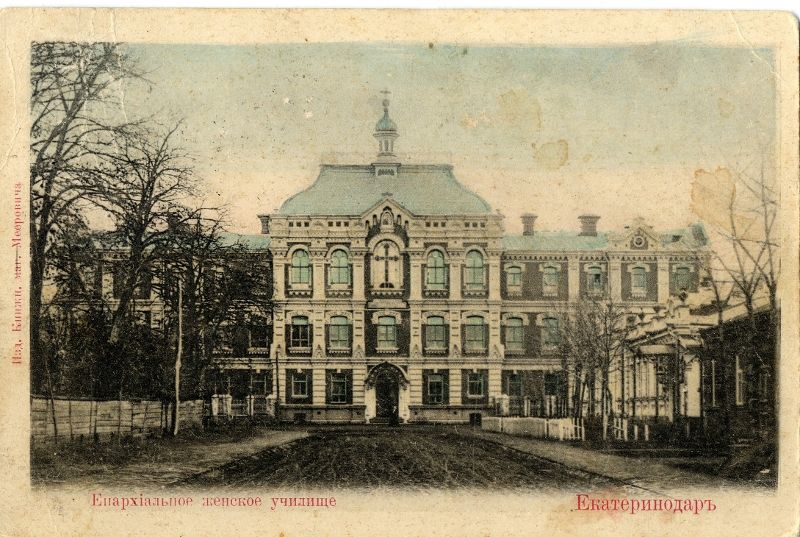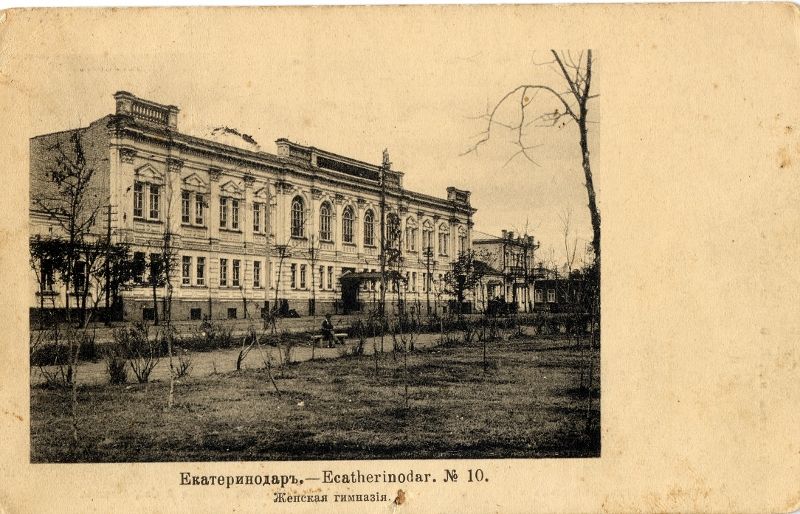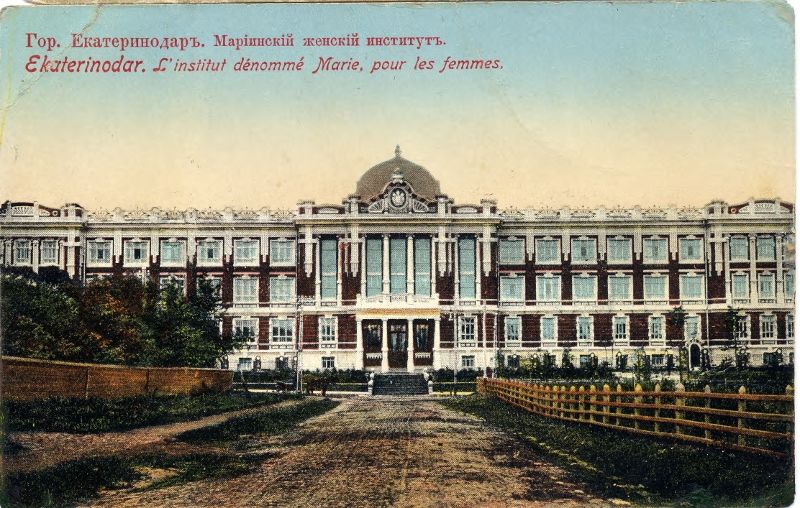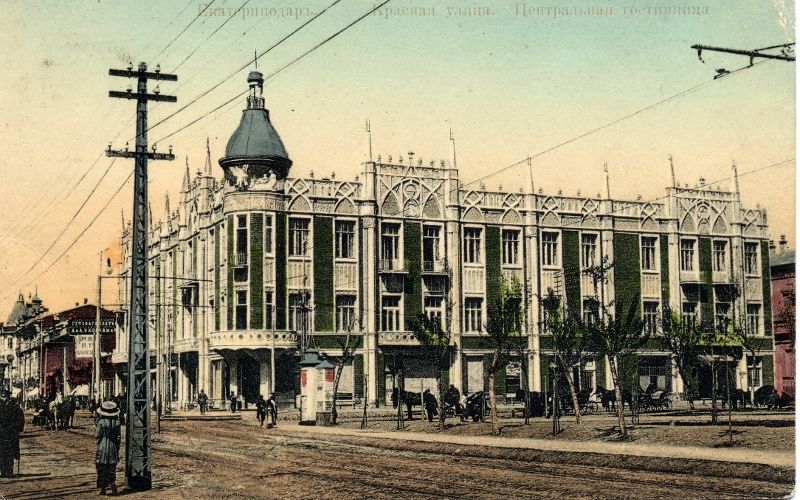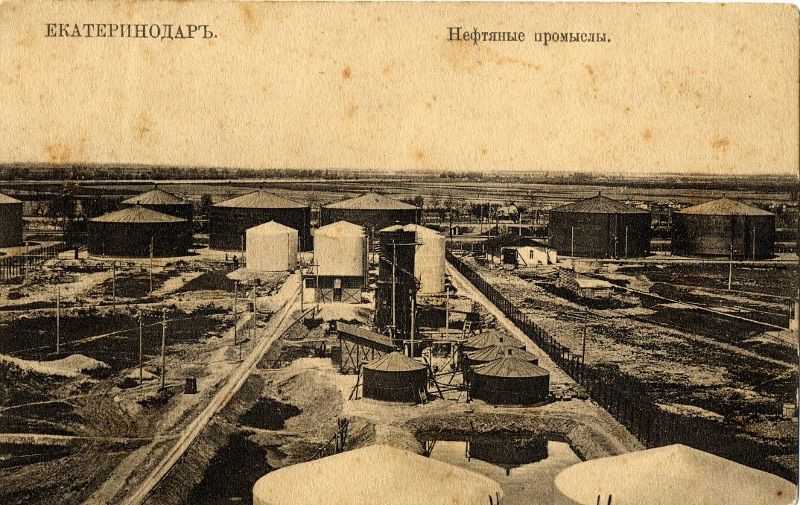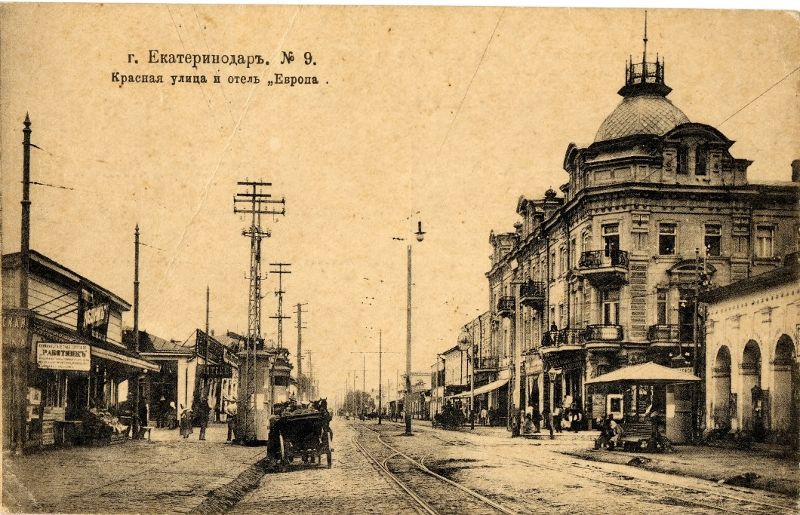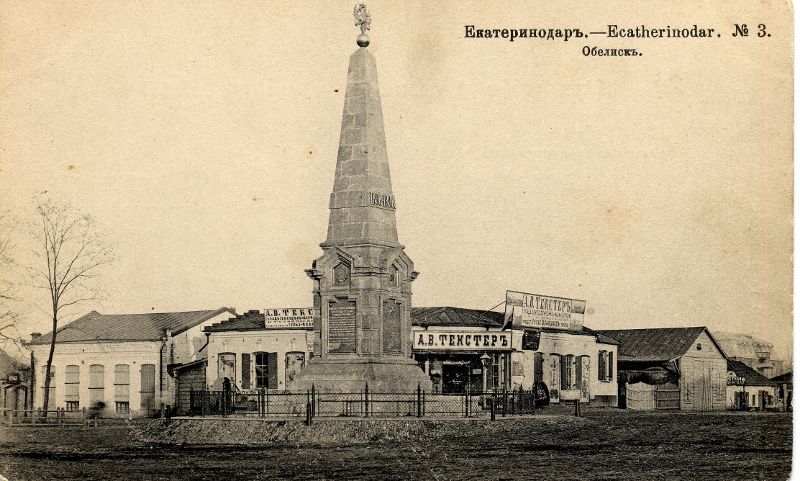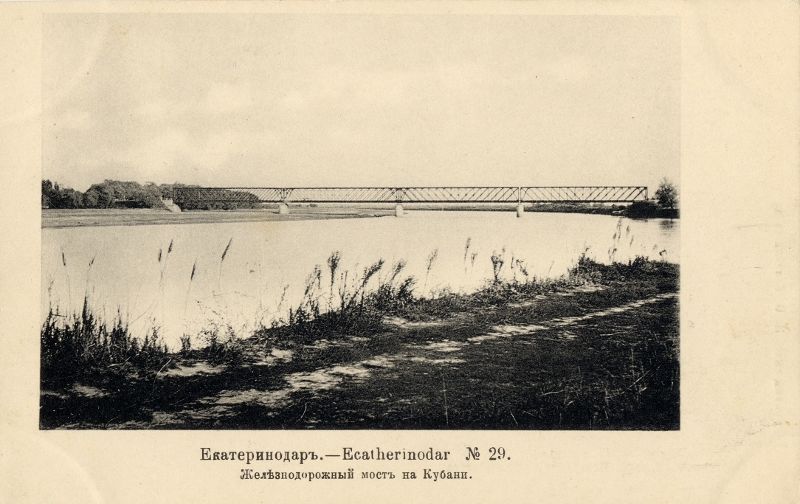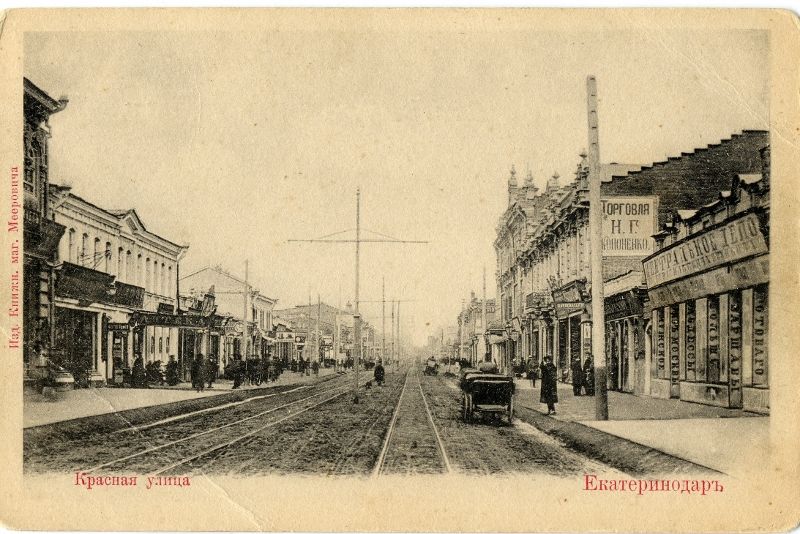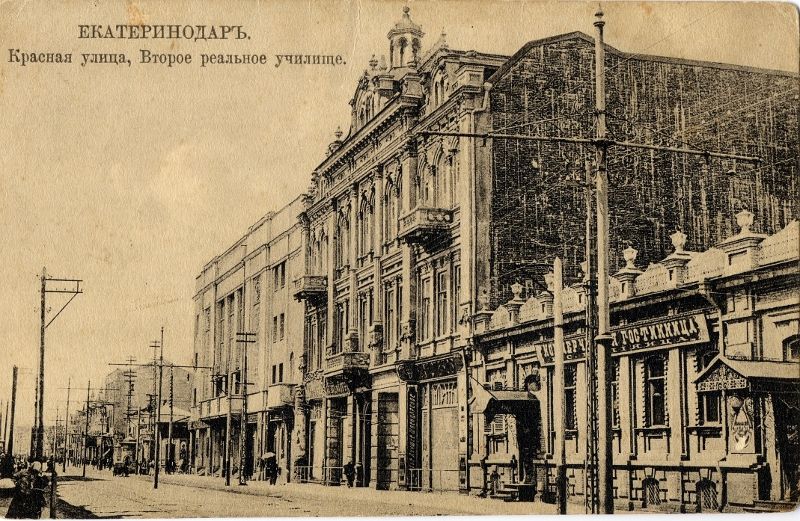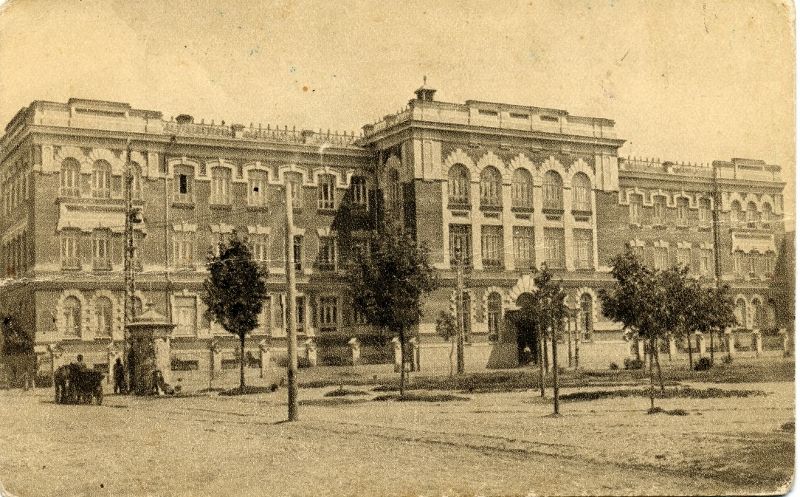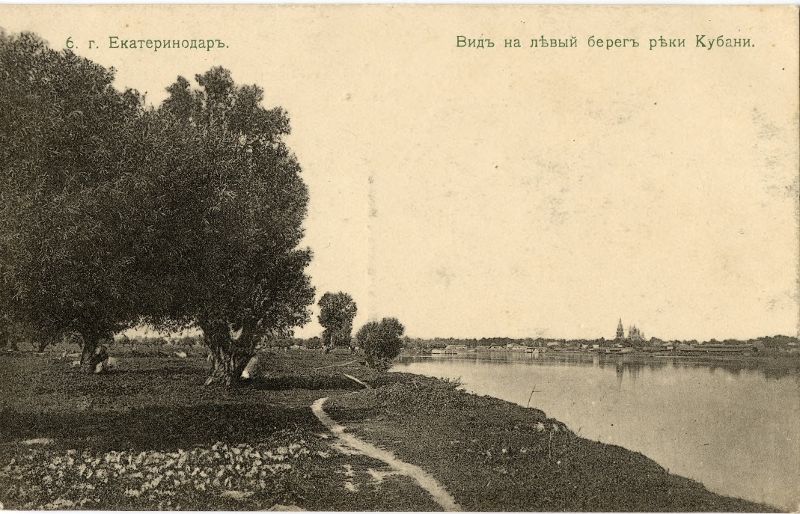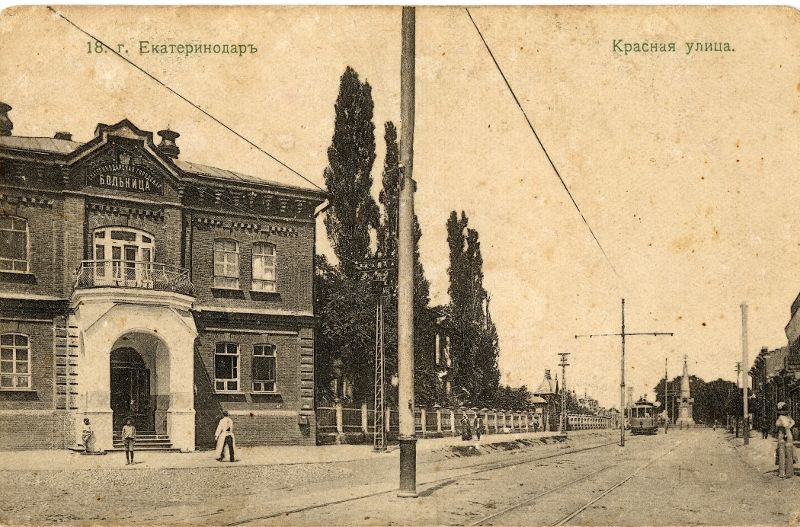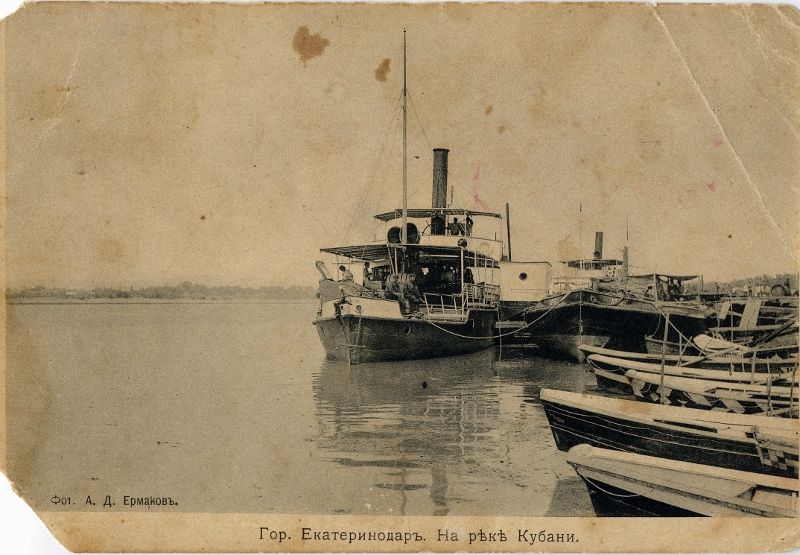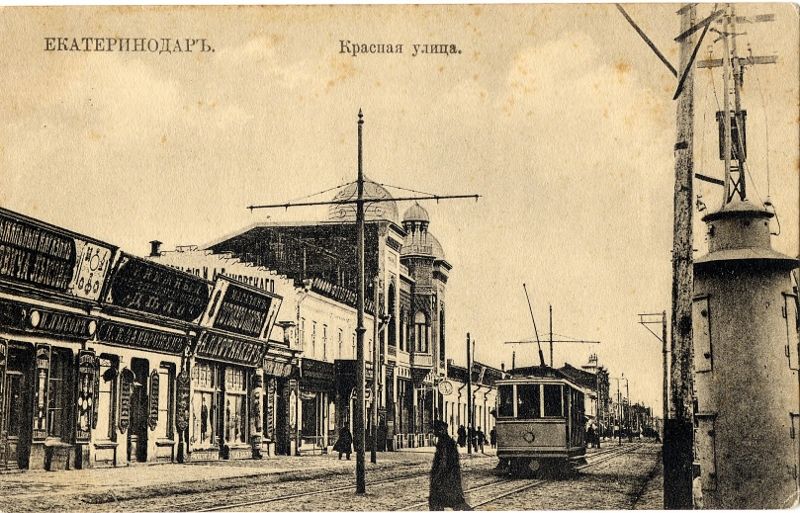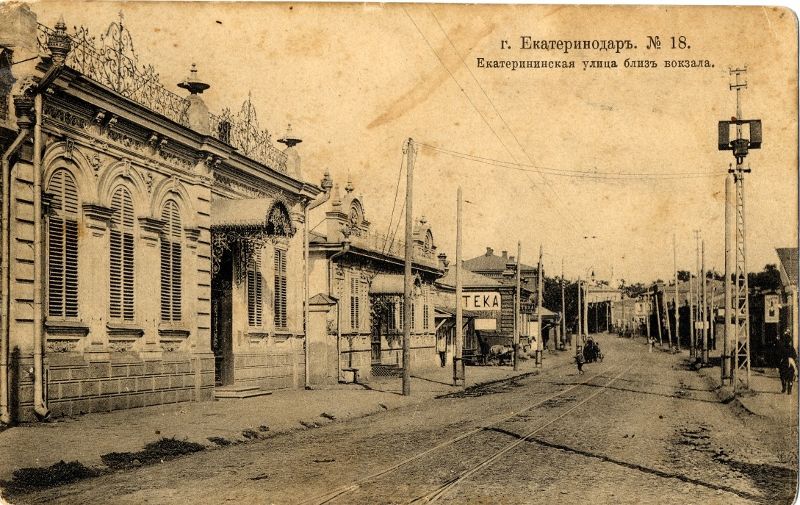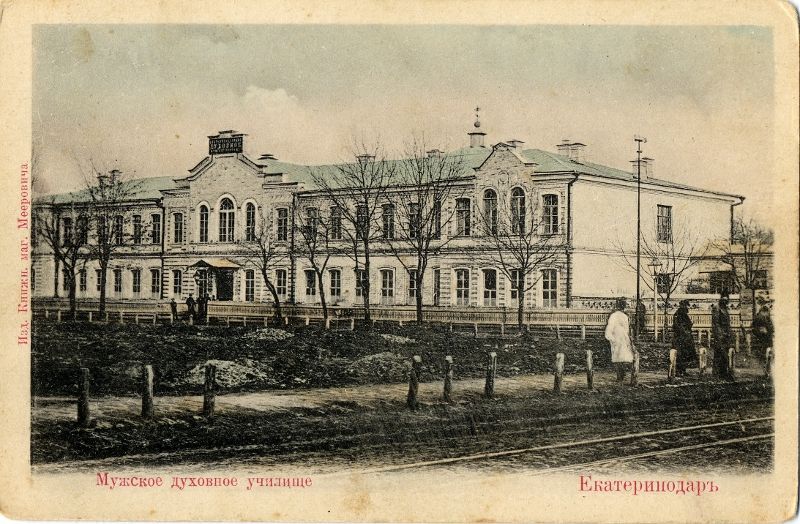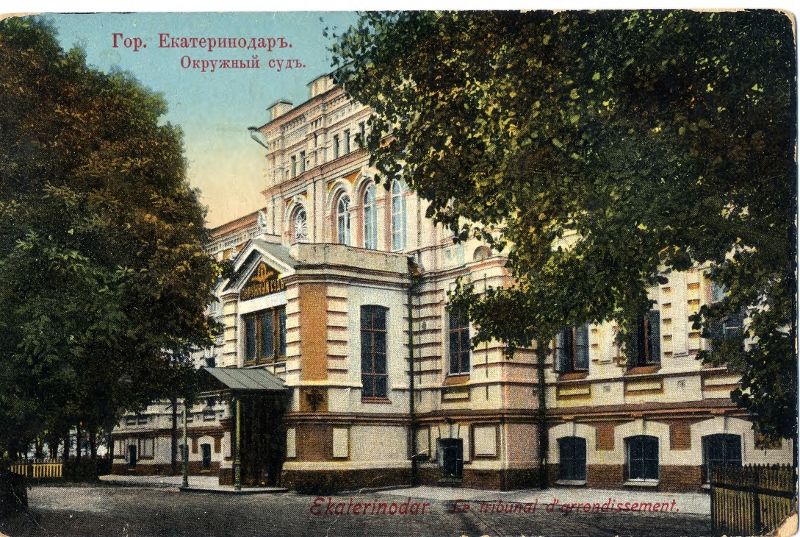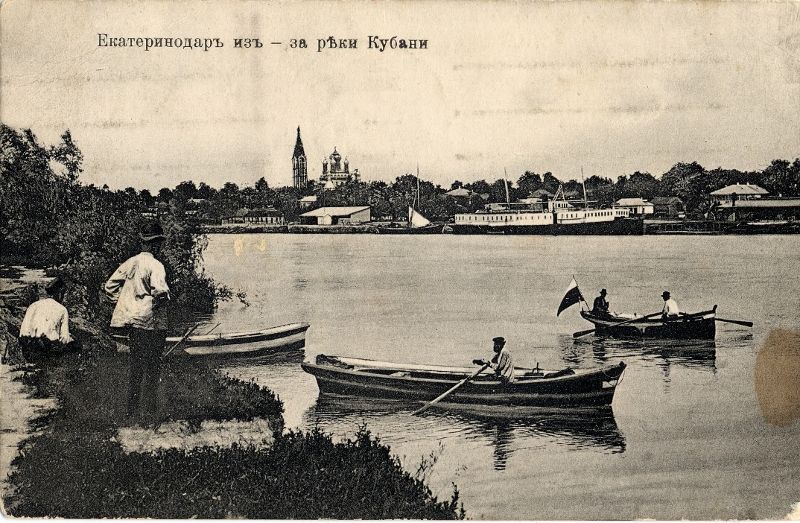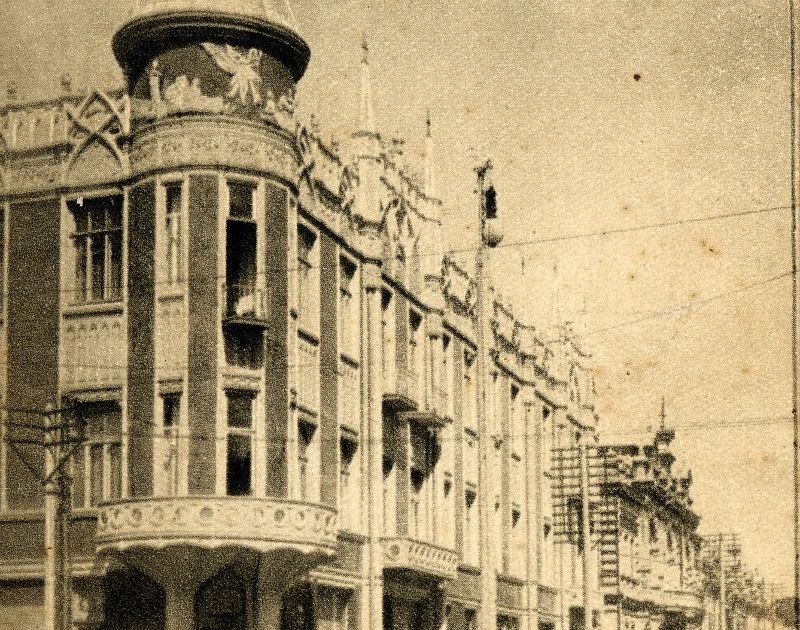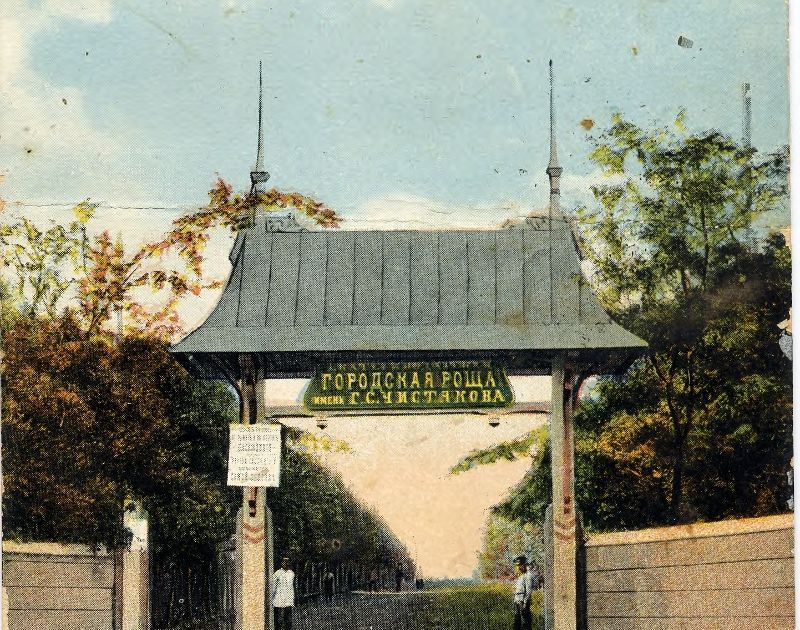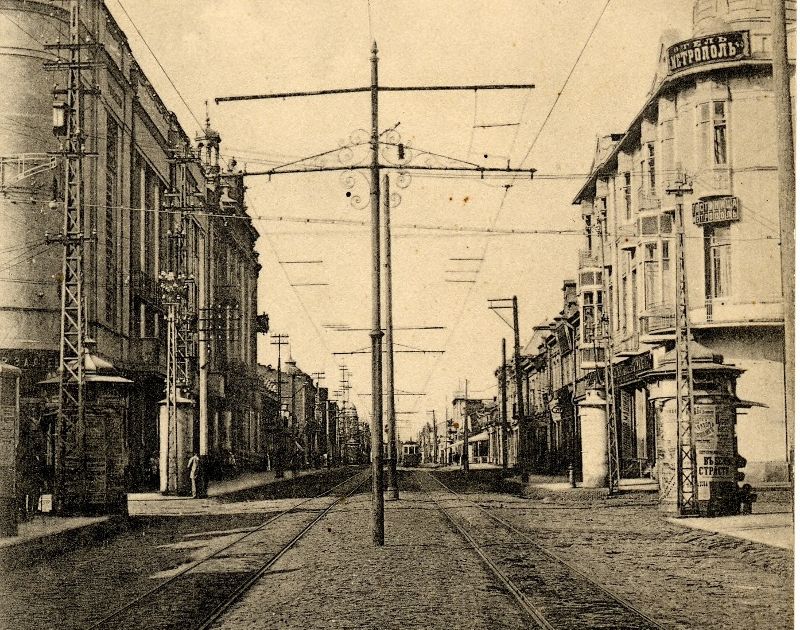In 1803 the first school appeared in Yekaterinodar, and after three years it turned to district college; in 1820 the first Kuban Army grammar school was opened. The army archpriest K. V. Rossinskiy was appointed to the post of the principal; he was gifted and well-educated person and he devoted all his life to the education of the Cossacks. In a period from 1812 till 1817 he opened six parish schools in Kuban villages, provoking “envy of other villages". In 1815 Rossinskiy managed to publish “The short rules of Russian spelling” in Kharkov. Intended for the folk school text-book was edited several times. K. V. Rossinskiy is considered to be the outstanding Kuban citizen of that time. Beside his educational activity he inaugurated new churches, wrote historical and geographical essays, cultivated love to the art and poetry and was thought to be a skilled physician among the Cossacks. In 1825 shortly before his death K. V. Rossinskiy was awarded with St. Ann’s Order of the 2nd grade with the diamonds.
Kuban Army school was built for the children of the army class, but along with it there worked “the parallel classes” for non-Cossack children who successfully passed the entry exams and were able to pay for education. In 1890 after the opening city men gymnasium the Army school was cancelled, and another Army educational institution move in that building, it was Kuban Alexander real specialized college that was founded in 1880.
The new building of real specialized college gradually became the original educational and scientific centre of the town. In 1891 courses on drawing and sketching for the adults, especially workers began to work there. The students registered meteorological observations, and bulletins with the forecast were published in the local press. The mountain club, established in that college, held the expeditions studying the resources of the territory during summer vacations. There weren’t any spacious lecture-rooms there, for that reason different meetings were held on in the assembly hall of the real college: the Society of students of the Kuban territory (OLIKO), Kuban branch of the Russian technician society and the members of the Public universities Society gave lectures on scientific problems and so on. During the Great Patriotic war the building was destroyed. At the very place The House of the Soviets was built (1956). At first it was five-storied building, but later additional storeys were built. Modest compact building with the waving flag was the place of Territorial Executive Committee. Nowadays the Administration of Krasnodar Region is placed here. In front of it there is cozy nook – strict rows of silver fir-trees, the lawn greens. There are two natural monuments – old platens grew in the yard of the real college.
.jpg) In August 1820 Alexander Pushkin passed through Yekaterinodar from Pyatigorsk to Taman and farther to the Crimea together with the general N. N. Rayevski family. He wrote: "I saw the shores of river Kuban and watched villages; I admired our Cossacks: always on horseback and always ready to fight, and always on the alert..." (in the picture - A. Pushkin’s monument in Krasnodar city). In autumn 1837 M. Yu. Lermontov (he was an ensign of Nizhniy Novgorod dragun regiment) stayed in Krasnodar on his way to Taman. That time Yekaterinodar was Army location and didn’t look like the city. It was said in the official report: "Beside the house of ataman and few buildings in the fortress like hospital, barn for artilleries and a stall, the city consisted of small wooden, wicker and reed constructions covered with a thatched or reed roof ".
In August 1820 Alexander Pushkin passed through Yekaterinodar from Pyatigorsk to Taman and farther to the Crimea together with the general N. N. Rayevski family. He wrote: "I saw the shores of river Kuban and watched villages; I admired our Cossacks: always on horseback and always ready to fight, and always on the alert..." (in the picture - A. Pushkin’s monument in Krasnodar city). In autumn 1837 M. Yu. Lermontov (he was an ensign of Nizhniy Novgorod dragun regiment) stayed in Krasnodar on his way to Taman. That time Yekaterinodar was Army location and didn’t look like the city. It was said in the official report: "Beside the house of ataman and few buildings in the fortress like hospital, barn for artilleries and a stall, the city consisted of small wooden, wicker and reed constructions covered with a thatched or reed roof ".
Some old-aged buildings in the city centre make the vivid image of Yekaterinodar of XIX – early XX century. St. Catherine′s Cathedral, famous “green house” (Gimnazicheskaya st., 65 – hotel “Kuban”), buildings of present Post office, Sberbank and Fine Art museum, former Mariinsky women college (Oktyabrskya st. and Krasin st.) and former Diocesan female college (now Medical Academy on Sedin st., 4).
In 1897 on the crossroad of Krasnaya street and Novaya street (now Budyonniy st.) the obelisk 14 meter tall was put up in honour of 200-year anniversary of Kuban Cossack army, from the time of participation of the Khoper Cossacks in Peter the Great siege of the Azov fortress in 1696, and in commemoration of freedom and lands granted by Catherine the Great. As other memorials the obelisk was ruined (in the picture to the right - reconstructed obelisk).
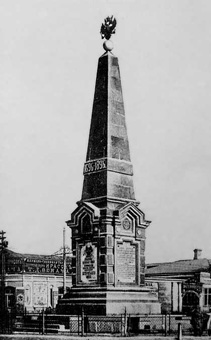
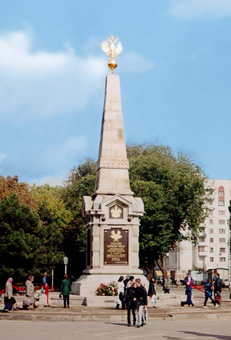 The former Army garden (since 1932 – Gorky Park) is one of the sightseeing of old Yekaterinodar. It was founded on the 8th of October 1848 as arboretum, which was intended to be the supplier of the Black sea Cossack army and give "various fruit-trees and useful plants: there one can see the effective ways of land reclamation and tree surgery". Only in 1865 – 1866 in the garden 50,5 thousand of "noble vine rods... for the citizens of just settled down villages behind Kuban river" were prepared. Those who wished to have vinery could have the vines for free. Later Yekaterinodar army garden started to look like a park. On its territory there was “voxhall” (dancing hall), restaurants, army archive and other offices. In summertime 1865 there were some entrance rules for the dancing hall: «The noblemen of Kuban Cossacks army, temporarily stayed visitors of noble class, honorable men and merchant class may visit the ancing hall». In the end of XIX century the summer wooden theatre for 1450 seats was built. Famous companies played, Shalyapin sang and army symphonic orchestra played every night in the theatre. In 1943 the theatre was turned by Germans into the store and was burnt.
The former Army garden (since 1932 – Gorky Park) is one of the sightseeing of old Yekaterinodar. It was founded on the 8th of October 1848 as arboretum, which was intended to be the supplier of the Black sea Cossack army and give "various fruit-trees and useful plants: there one can see the effective ways of land reclamation and tree surgery". Only in 1865 – 1866 in the garden 50,5 thousand of "noble vine rods... for the citizens of just settled down villages behind Kuban river" were prepared. Those who wished to have vinery could have the vines for free. Later Yekaterinodar army garden started to look like a park. On its territory there was “voxhall” (dancing hall), restaurants, army archive and other offices. In summertime 1865 there were some entrance rules for the dancing hall: «The noblemen of Kuban Cossacks army, temporarily stayed visitors of noble class, honorable men and merchant class may visit the ancing hall». In the end of XIX century the summer wooden theatre for 1450 seats was built. Famous companies played, Shalyapin sang and army symphonic orchestra played every night in the theatre. In 1943 the theatre was turned by Germans into the store and was burnt.
You can learn about the history of Krasnodar and region in the city museums. There are more than 200 thousand exhibits in local historical and archeological museum founded in 1879 by E. D. Felitsyn – the secretary of Kuban statistic committee and the chairman of Caucasian archeological commission. The history of Cossacks is represented in the home-museum of F. Y. Bursak (ataman in 1797-1816) and Kuban literature museum which is situated in the house of Y. G. Kukharenko (ataman of the Black sea Cossacks army in 1852-1855) who was also a historian, writer and public activist.
Fine art museum (given state status since 1937) was arisen on the base of municipal art gallery opened in 1904 by the town council and adopted private collection of works of art from F. A. Kovalenko who became the first gallery director. 15 paintings of the well-known artists received from Imperial Art Academy due to I. E. Repin’s support were among the first replenishment of the gallery. This famous artist came to Yekaterinodar in 1888 year ‘for depicting the typical living models in former Black sea Cossacks army villages for his future painting of Zaporozhian Sech’, as it was written in ‘Kuban regional bulletin’ of that time.
State Academician Kuban Cossacks Choir has got worldwide fame; it was founded in 1811 when Army Choir appeared in Yekaterinodar and among its founders were K. V. Rossinskiy and F. Y. Bursak.
43,5 thousand people lived in Yekaterinodar on the first of January in the year of 1888; among them there were bourgeoises – 22850, farmers – 7920, ranked people who were on holidays and lower rank retired persons and their families – 4532, noblemen – 2350, Cossacks of Kuban army – 2253. There were 8 churches and one cathedral, 7 hotels, 3 restaurants, 110 taverns and drinking esteblishments, 250 shops and stores, also 80 factories, 4 artels, 3 printing houses and one tobacco factory.
Four fairs were conducted in Yekaterinodar every year: Blagoveschenskaya, Troyitskaya, Preobrazhenskaya, Pokrovskaya. There was exchange yard where mountaineers carried their goods; in 1842 the Trade Society of The Black Sea Cossacks Army was founded. The trade development was improved by starting of steamboats navigation on Kuban river. The first Kuban steamboat transported cargos and postal mails between Tbilisskaya village and Temryuk in 1859 year.
In Kuban in 1914 there were 13 steamboats and 300 barges that transported 15 million poods of different cargos every year.
Northern Caucasus Tikhoretzk-Yekaterinodar-Novorossiysk railway was opened in 1870-1880 and the city turned into a large commercial and industrial and shipping centre of Kuban region (sale of bread, tobacco, leather, flour-grinding, butter-making, alcohol, tobacco, leather and other light industries).
The development of Yekaterinodar heavy industry started in the beginning of 20th century. The metal-working factory ‘Kubanol’ was built in 1911 (now it is machine-tool factory of Sedin). In 1915 year – cast-iron factory (now the plant of tensometric equipment) and others which used metal and carbon from Donetsk. The oil factory was founded on base of Maikop oil (the deposit was discovered in 1909 year).
In late 1930-s just before the war the cultural life in Yekaterinodar changed with the opening of regional Drama theatre in the name of M. Gorky and theatre of operetta.
In the period from 12 August 1942 till 12 February 1943 Krasnodar was occupied by German fascist troops that did a great harm to the city. After the war the city was rebuilt and reconstructed, but streets in the central part of the city remained the same as in the beginning of XIX century. As before the main orientative line in planning of city was Krasnaya Street, main offices, libraries, hotels, theatres, large shops are situated there. It is worthy of note that total street renaming hadn’t touched it and it is named its first name – Krasnaya Street.
Some postcard pictures can help to learn about life circumstances of Yekaterinodar of that time:

The Triumphal Arch, or the Tsar′s Gate, was erected by the architect V. Filippov in 1888 in honour of Emperor Alexander III and the royal family′s visiting the city. It stood on route from the railway station to the city centre at the intersection of Yekaterininskaya (now - Mira) and Kotliarevskaya (Sedin) Streets.
Built in traditions of the Old-Moscow style, the Arch consisted of a central and two side spans under a tile pyramidal roof. The abutments of the central arch were decorated by four tent-shaped topped with gilded two-headed eagles.
Icons of St. Prince Alexander Nevsky, the patron saint of Emperor and the Russian army, and St. Catherine the Great Martyr, the patroness of Yekaterinodar, were placed in the large corbel arches on each side of the central arch.
At nighttime the arch was lamp-lit. In 1900 tramways were laid beneath it.
In 1928 the Triumphal Arch was destroyed, as it was reported, because “the tram conductors would hurt their heads on it”. In 2008 it was restored at the intersection of Krasnaya and Babushkin Streets.
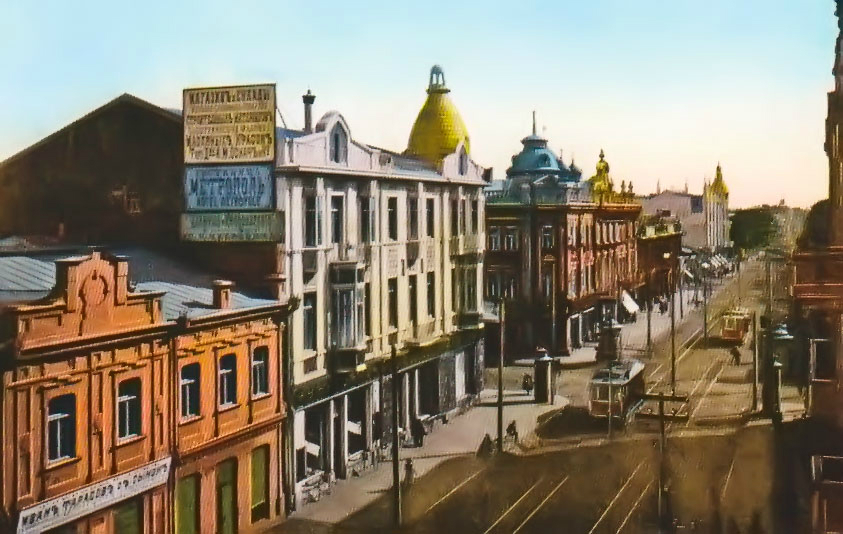
If looking from left to right, the first thing to see would be the Kuban Oblast Drawing Office which let premises to the company Ivan & Sons, as follows from the signboard. On the ground floor of the following building was a shop of ironmongery, hempen wares and building materials, and G. Meyerovich′s books and stationary shop; on the first and second floors — the Metropol Hotel.
On the opposite side is seen a three-storey house. It was rented by the 2nd Public Assembly that arranged concerts, balls and theatrical performances in the building′s assembly hall. Among its guest performances were A. Skriabin, a well-known composer and pianist; L. Sobinov, the Bolshoi′s soloist; A. Vialtseva and N. Plevitskaya, famous singers. The hall played host to exhibitions of local and visiting artists and was use as a lecture centre. In 1913, this house lodged the “Khudozhestvenny” cinema and the theatre of miniatures known by its performances of trendy vaudevilles.
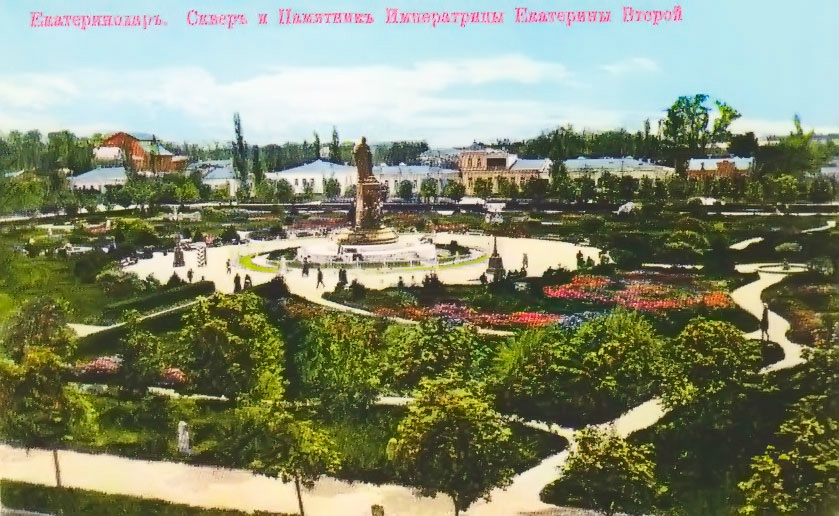
The image features Catherine′s Gardens laid out between the Appointed Ataman′s Palace and the County Court (today Krasnodar Region′s Legislative Assembly). The monumental sculpture of Catherine II was the compositional centre of the Gardens.
The Gardens′ space was parceled by alleys and footpaths. Around the monument were small pools and fountains. At night, the area was brightly lit with lamps.
Catherine′s Gardens abutted on an orchard stretched behind the Ataman′s Palace. The guide “Kuban and the Black Sea Coast” (1927) wrote “The palatial orchard the size of a city block has many interesting and very nice arboreal plants, natives of the Kuban area and beyond”.
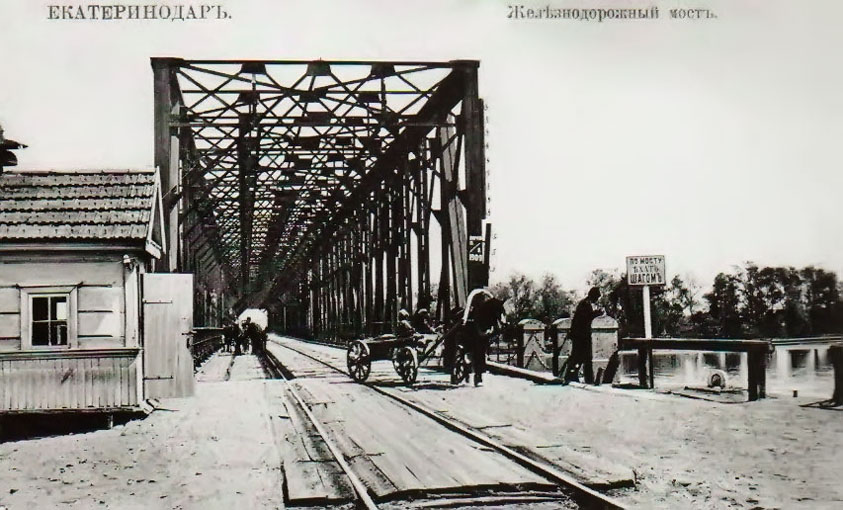
In 1887 a bridge was erected along the Novorossiysk railway branch line, a little southward of Yekaterinodar. It was a grand construction in that time — the length of the bridge was over 304 meters. Its openwork metallic frame made at Briansk ironworks rested on four massive stone piers. Apart from a railway, the bridge had lanes set aside for carriages, carts and pedestrians.
The testing of the new bridge became a spectacular event for crowds of the city dwellers. For two hours 6 locomotives with tenders (wagons) jointly weighing 25 000 poods (420 tons) stayed on each span simultaneously. Then three trains crossed the bridge at different speeds. The last test was the crossing of the bridge of the special train with the public.
Soon after the inauguration, the bridge had proved too low to let tall riverboats pass under it. Apparently, that was how the Vladikavkaz Railway Society, the building promoter, had endeavoured to fight the competing river transport. All the steamship companies′ attempts to reconstruct the bridge has eventually failed.



